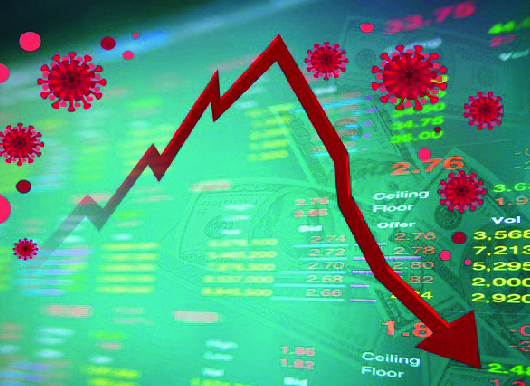
The Impact of Coronavirus on the Gulf Countries
The International Monetary Fund (IMF)
forecasts that the Middle East is headed for an economic downturn this year that will be much worse than the 2008-09 global financial crisis, hammered by the coronavirus pandemic and record low oil prices.
The IMF downgraded its outlook for Middle East and Central Asian economic recovery, predicting a 4.1 percent contraction for the region as a whole – 1.3 percentage points worse than its previous assessment in April – in its latest regional outlook report.
Like arguably every corner of the world, each country in the GCC has been forced to implement stringent measures and tread that tightrope of cutbacks on one hand and economic stimulus packages on the other.
UAE
The economy of the UAE will suffer a deeper contraction this year than first estimated, dragged down by disruptions caused by the coronavirus pandemic, according to the country’s central bank.
Gross domestic product will shrink 5.2 percent in 2020, compared with a previous forecast for a decline of 3.6 percent, the central bank said in its quarterly review. GDP in the Arab world’s second-largest economy dropped an estimated 7.8 percent last quarter after a 0.8 percent contraction in the prior three months, it said.
The outlook is slightly worse than forecasts compiled by Bloomberg, which see a decline of 5.1 percent this year. The UAE economy last contracted by over 5 percent in 2009, according to the IMF.
Saudi Arabia
The Gulf’s largest economy will contract sharply this year due to the impact of the coronavirus pandemic but the extent of the economic shrinkage will not be as bad as first thought, according to the IMF.
In June, the IMF predicted that Saudi Arabia’s GDP will shrink by 6.8 percent this year, its worst performance since the 1980s oil glut, as low crude prices and coronavirus continued to batter Middle East economies. But last month, in its latest World Economic Outlook, the IMF said the Saudi economy was forecast to shrink by 5.4 percent before delivering 3.1 percent growth in 2021.
Kuwait
Last month, Kuwait’s central bank cut interest rates on some monetary policy instruments in an effort to ease pressure on the currency while helping the economy cope with the impact of the Covid-19 pandemic.
In a surprise move, the central bank also said it would keep the discount rate at 1.5 percent, maintaining the existing cap for loans extended to customers in Kuwaiti dinars.
Kuwait’s budget deficit increased 69 percent to KD5.64bn ($18.48bn) in the last fiscal year, and the government estimates it’ll more than double to KD14bn ($45.86bn) in the current fiscal year, ending March 31.
Oman
Oman is on track to run its biggest budget shortfall since 2016, estimated this year at 16.9 percent of gross domestic product by the IMF. The country’s sovereign rating was downgraded twice in 2020 by Moody’s Investors Service.
Facing what Oxford Economics has called a “crunch point” next year, when it has to refinance a maturing $1.5bn bond, Oman has few options besides loading up on more debt. The government’s fiscal deficits and external debt maturities will amount to $12bn to $14bn – or about 20 percent of GDP – per year from 2020 through 2022, according to Fitch Ratings.
Oman’s economy has been struggling since the last oil crash in 2014. Like its neighbours, it was forced to tap international debt markets to plug budget deficits but it was slower to implement fiscal reforms despite dwindling reserves.
Bahrain
In August, credit rating agency Fitch downgraded Bahrain’s long-term foreign-currency issuer default rating to ‘B+’ from ‘BB-’, with the cut reflecting the combined impact of lower oil prices and the coronavirus outbreak on the kingdom.
Although the agency rated Bahrain’s outlook at ‘stable’, the pandemic and the lower oil prices have marked increases in the budget deficit and government debt, and caused a sharp gross domestic product contraction for Bahrain, Fitch said.
Bahrain’s government revenue fell 29 percent in the first half of 2020. Fitch said it forecast the state budget deficit to widen to 15.5 percent of GDP in 2020 from 4.6 percent of GDP in 2019.
Viewed By:
